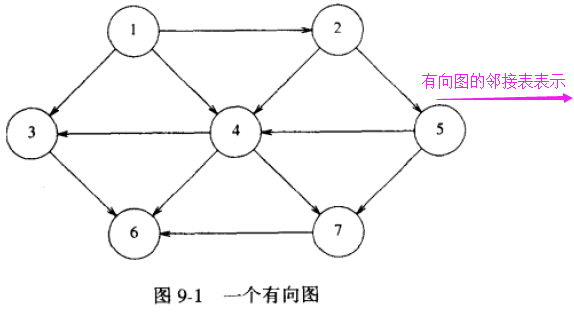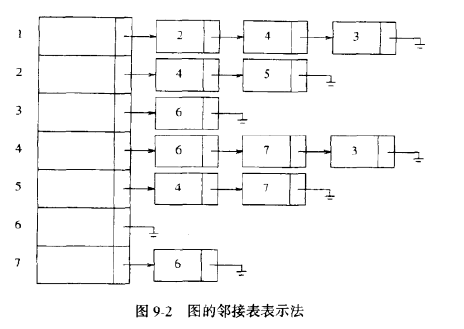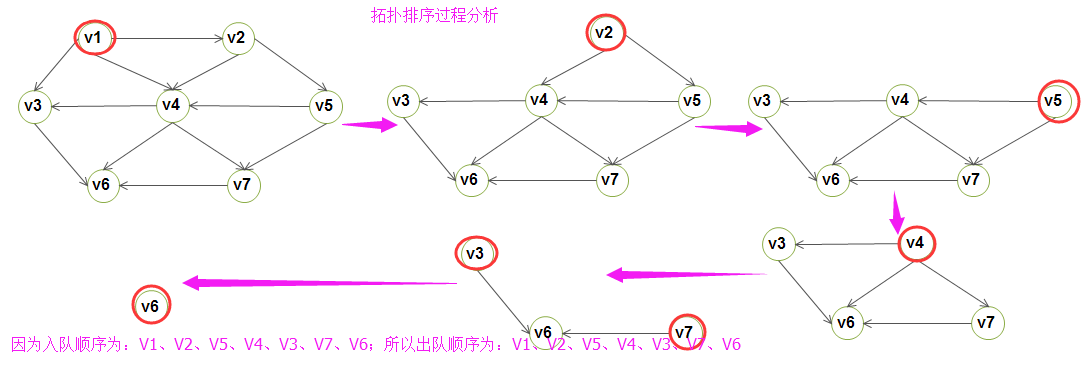【0】README
0.1) 本文总结于 数据结构与算法分析, 源代码均为原创, 旨在理解 拓扑排序的思想并用源代码加以实现;
0.2) 图论算法基础知识,参见 http://blog.csdn.net/pacosonswjtu/article/details/49893715
【1】拓扑排序(有向无圈图才有资格谈拓扑排序,有向且要无圈)
1.1)拓扑排序定义: 拓扑排序是对有向无圈图的顶点的一种排序, 它使得如果存在一条从 vi 到 vj的路径,那么在排序中 vj出现在 vi的后面;(有向无圈图:一个有向图没有圈, 圈:满足w1=wn 且长度至少为1个一条路径)
1.2)拓扑排序应用(有点像联机算法): 课程选修顺序, 如有向边(v, w)表明课程v 必须在课程w 选修前修完;(显然,如果图含有圈, 那么拓扑排序是不可能的)
1.3)一个简单的求拓扑排序的算法是: 先找出任意一个没有入边的顶点。 然后我们显示出该顶点,并将它和他的边一起从图中删除;
1.4)改进后的求拓扑排序的算法:
- 1.4.1)算法描述:通过将所有入度为0 的顶点放在一个特殊的盒子中而避免这种无效的劳动。此时 FindNewVertexOfIndegreeZero 函数返回(并删除)盒子中的 任一顶点。当我们降低这些邻接顶点的入度时,检查每一个顶点并在它的入度 降为0 时把它放入盒子中;
- 1.4.2)实现盒子(引入了队列):为实现这个盒子,我们使用一个栈或者队列;首先, 对每一个顶点计算它的入度。然后,将所有入度为0的顶点放入一个初始为空的队列中。当队列不空时,删除一个顶点v, 并将与v 邻接的所有顶点的入度减1。只要一个顶点的入度降为0, 就把该顶点放入队列中。此时,拓扑排序就是顶点出队的顺序;
- 1.4.3)我们的假设:我们假设图已经被读到一个邻接表中且入度已计算并被放入一个数组内;
- 1.4.4)时间复杂度是: O(|E| + |V|);
【2】拓扑排序源代码 + printing results:
 |  |
2.1)download source code:
https://github.com/pacosonTang/dataStructure-algorithmAnalysis/tree/master/chapter9/p219_topSort
2.2)source code at a glance(for full code, please download source code following the given link above):
#include "adjTable.h"
#include "queue.h"
void topSort(AdjTable* adj, int size, int* indegreeArray, Queue queue)
{
int i;
int counter;
ElementType vertex;
ElementType adjVertex;
AdjTable temp;
AdjTable temp1;
for(i=0; i<size; i++)
if(!indegreeArray[i]) // find the element who has zero indegree in adjoining table
enQueue(queue, i); //let the element enter the queue
printf("\t topSorting sequence is as follows: ");
counter = 0;
while(!isEmpty(queue))
{
vertex = deQueue(queue); // if the queue is empty, conducting departing queue
temp = adj[vertex]->next;
while(temp)
{
adjVertex = temp->index; // each adjVertex adjacent to vertex
if(--indegreeArray[adjVertex] == 0)
enQueue(queue, adjVertex);
temp1 = temp->next;
free(temp);
temp = temp1;
}
printf("vertex[%d] ", vertex+1);
counter++;
}
if(counter != size)
Error("failed top sorting, for graph has a cycle, from func topSort !");
disposeQueue(queue);
printf("\n\t");
}
// initializing indegree array with given size
int *initIndegree(int size)
{
int *indegreeArray;
int i;
indegreeArray = (int*)malloc(sizeof(int) * size);
if(!indegreeArray)
{
Error("failed intialization ,for out of space ,from func initIndegree");
return NULL;
}
for(i=0; i < size; i++)
indegreeArray[i] = 0;
return indegreeArray;
}
int main()
{
AdjTable* adj;
int *indegreeArray;
Queue queue;
int size = 7;
int i;
int j;
int column = 3;
int adjTable[7][3] =
{
{2, 4, 3},
{4, 5, 0},
{6, 0, 0},
{6, 7, 3},
{4, 7, 0},
{0, 0, 0},
{6, 0, 0}
};
printf("\n\n\t ====== test for topological sorting with adjoining table ======\n");
adj = initAdjTable(size);
indegreeArray = initIndegree(size);
queue = initQueue(size);
printf("\n\n\t ====== the initial adjoining table is as follows:======\n");
for(i = 0; i < size; i++)
for(j = 0; j < column; j++)
if(adjTable[i][j])
{
insertAdj(adj, adjTable[i][j]-1, i); // insertAdj the adjoining table over
indegreeArray[adjTable[i][j]-1]++; // update indegree of elements
}
printAdjTable(adj, size);
// topSorting starts
//void topSort(AdjTable* adj, int size, int* indegreeArray, Queue queue)
topSort(adj, size, indegreeArray, queue);
return 0;
} 2.3)printing results:
























 2万+
2万+











 被折叠的 条评论
为什么被折叠?
被折叠的 条评论
为什么被折叠?








